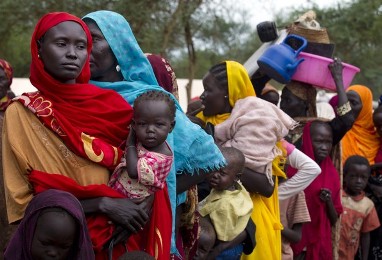2,500 new Sudanese refugees arrive in S. Sudan: MSF
October 13, 2013 (JUBA) – Some 2,500 Sudanese from South Kordofan state have arrived in South Sudan’s Upper Nile state and are in need of humanitarian assistance, an aid agency said.

“Some explained they had left their homes due to the on-going conflict and growing lack of food after two consecutive poor harvest seasons, as well as limited supply routes,” MSF said in a statement.
Also of concern, the agency stressed, is the nutritional status of the displaced women and children, many of who reportedly look weak with fears that their conditions could worsen.
More than 200 children under five years of age, the agency said, are now receiving treatment in the ambulatory therapeutic feeding programme in Upper Nile’s Kodok town.
“MSF medical teams are carrying out mobile clinics on a weekly basis, monitoring the health status of the population and providing basic healthcare to assist the most vulnerable population,” MSF further noted.
In addition to medical assistance, MSF is lobbying other stakeholders to assure that proper and swift action is taken in favour of the newly arrived communities, it stressed.
The conflict in South Kordofan started in June 2011 between the rebel Sudan People’s Liberation Movement/ North (SPLM-N) and the Sudan Armed Forces (SAF) and their aligned militia the Popular Defence Forces (PDF).
Since then, up to 700,000 people have reportedly either been internally displaced or severely affected by the conflict, although such figures cannot be independently verified due to lack of access to these areas.
(ST)
